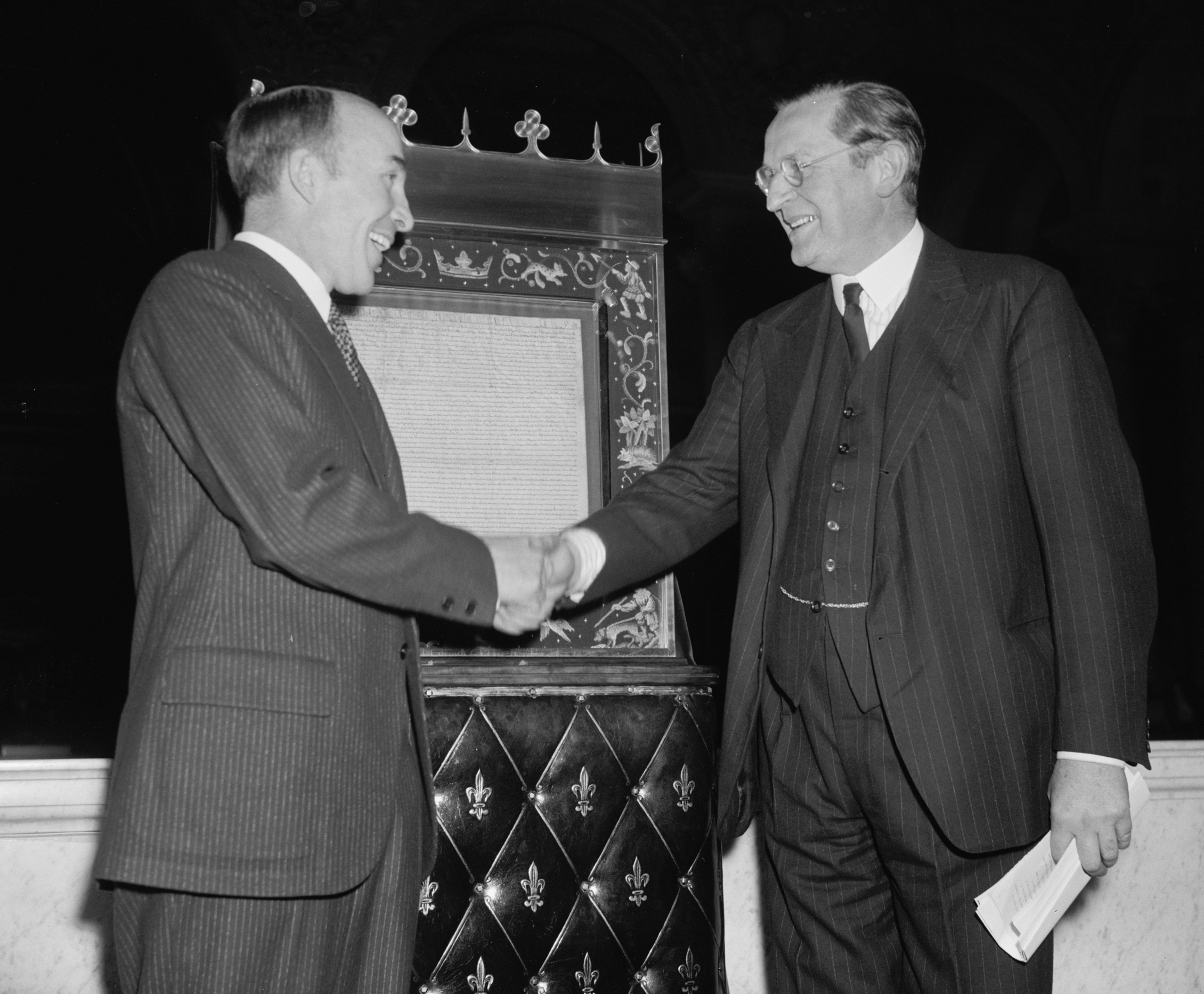Photos: Magna Carta's Legacy
One of just four surviving copies of the Magna Carta is on display at the Library of Congress until Jan. 19, 2015. The 10-week exhibition, "Magna Carta: Muse and Mentor," celebrates the text's 800th birthday. [Read full story about the Magna Carta exhibit]
The centerpiece of the exhibition is the Lincoln Cathedral Magna Carta, named after the document's caretaker, the Lincoln Cathedral in England. In 1215, feudal barons pressured King John into signing the Magna Carta, whic had 63 clauses designed to limit the king's power. (Credit: Library of Congress)
This particular copy of the Magna Carta has a history in the United States. This photograph shows British ambassador to the United States Lord Lothian (right) handing over the document to Librarian of Congress Archibald MacLeish (left) for safekeeping during World War II in November 1939. (Credit: Library of Congress)
King John's signing of the Magna Carta has sometimes been mixed in with the legend of Robin Hood. Take the example of William Greer Harrison's 19th century play "Runnymede: A Drama of Magna Charta." In that story, King John plots to murder Robin Hood and take his bride, Maid Marian, according to the Library of Congress. But after the barons force John to sign the Magna Carta, the king realizes his plan has been thwarted, as a clause prohibits him from killing Robin Hood. (Credit: Library of Congress)
English legal scholars renewed their interest in the Magna Carta in the 17th century, upholding the text as an affirmation of individual liberties that could be protected from the powers of the state. This sentiment was reflected in the laws of the colonies as the British settled North America. In 1641, a jurist put together "The Body of Liberties," shown here, which would become the basis of Massachusetts law. The text included a summary of the Magna Carta's guarantees of freedom from unlawful imprisonment or execution, unlawful seizure of property, right to a trial by jury, and guarantee of due process of law, according to the Library of Congress. (Credit: Library of Congress)
As the Magna Carta was seen as a citizens' assertion of rights against an oppressive ruler, it had a strong influence on the American revolution. As part of the exhibition, the Library of Congress has on display a 1787 draft of the U.S. Constitution with annotations by George Washington and Constitutional Convention Secretary William Jackson. (Credit: Library of Congress)
Follow Megan Gannon on Twitter and Google+. Follow us @livescience, Facebook & Google+.
Get the world’s most fascinating discoveries delivered straight to your inbox.








